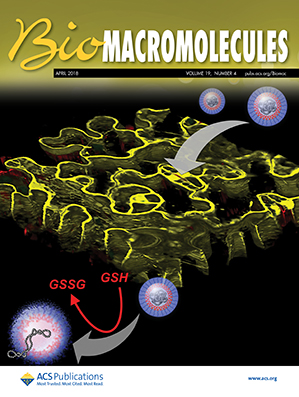siRNA Interaction and Transfection Properties of Polycationic Phosphorus Dendrimers
IF 5.4
2区 化学
Q1 BIOCHEMISTRY & MOLECULAR BIOLOGY
引用次数: 0
Abstract
Glioblastoma multiforme (GBM) is the most common type of primary brain tumor in adults and has a poor prognosis. Small interfering RNA (siRNA) can disrupt different mechanisms involved in the genesis of several diseases including GBM. However, siRNA complexation with nonviral cationic carriers is required to transport siRNAs inside cells and promote its function. We have designed and synthesized new cationic phosphorus dendrimers bearing either 6, 12, or 24 pyrrolidinium or piperidinium groups on their surface. These dendrimers bound siRNA, those bearing terminal pyrrolidinium having the highest affinity. However, they showed marked differences in protecting siRNA from RNase-mediated degradation. Molecular modeling suggested that, beyond the overall protonation status, the intrinsic flexibility and individual binding properties of these dendrimers contributed to the modulation of biological profiles. However, these phosphorus dendrimers were unable to transport significant amounts of siRNA into GBM cells and, accordingly, transfection was inefficient.
- Download: Download high-res image (92KB)
- Download: Download full-size image
多阳离子磷树状大分子siRNA相互作用及转染特性研究。
多形性胶质母细胞瘤(GBM)是成人最常见的原发性脑肿瘤,预后较差。小干扰RNA (siRNA)可以破坏包括GBM在内的几种疾病发生的不同机制。然而,siRNA需要与非病毒阳离子载体络合才能在细胞内运输siRNA并促进其功能。我们设计并合成了新的阳离子磷枝状大分子,其表面含有6、12或24个吡咯烷基或哌啶基。这些树状大分子结合siRNA,携带末端吡咯烷的树状大分子具有最高的亲和力。然而,它们在保护siRNA免受rna酶介导的降解方面表现出显著差异。分子模型表明,除了整体质子化状态外,这些树状大分子的内在灵活性和个体结合特性也有助于生物谱的调节。然而,这些磷树状大分子无法将大量siRNA转运到GBM细胞中,因此转染效率很低。
本文章由计算机程序翻译,如有差异,请以英文原文为准。
求助全文
约1分钟内获得全文
求助全文
来源期刊

Biomacromolecules
化学-高分子科学
CiteScore
10.60
自引率
4.80%
发文量
417
审稿时长
1.6 months
期刊介绍:
Biomacromolecules is a leading forum for the dissemination of cutting-edge research at the interface of polymer science and biology. Submissions to Biomacromolecules should contain strong elements of innovation in terms of macromolecular design, synthesis and characterization, or in the application of polymer materials to biology and medicine.
Topics covered by Biomacromolecules include, but are not exclusively limited to: sustainable polymers, polymers based on natural and renewable resources, degradable polymers, polymer conjugates, polymeric drugs, polymers in biocatalysis, biomacromolecular assembly, biomimetic polymers, polymer-biomineral hybrids, biomimetic-polymer processing, polymer recycling, bioactive polymer surfaces, original polymer design for biomedical applications such as immunotherapy, drug delivery, gene delivery, antimicrobial applications, diagnostic imaging and biosensing, polymers in tissue engineering and regenerative medicine, polymeric scaffolds and hydrogels for cell culture and delivery.
 求助内容:
求助内容: 应助结果提醒方式:
应助结果提醒方式:


